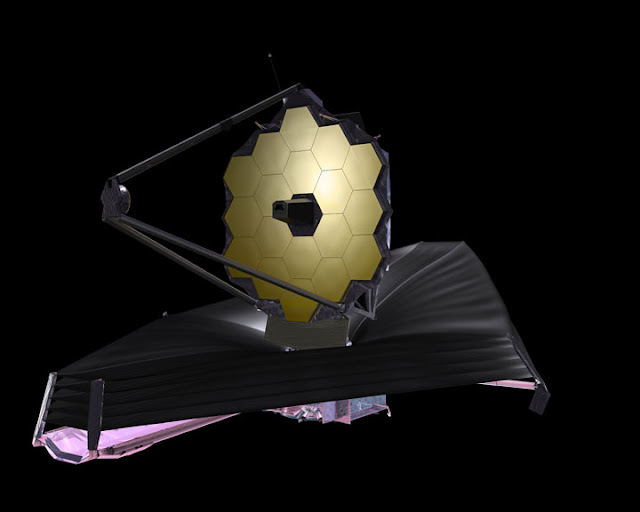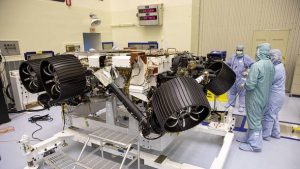The James Webb Space Telescope (JWST) is a space telescope designed primarily to conduct infrared astronomy. The U.S. National Aeronautics and Space Administration (NASA) led development of the telescope[8] in collaboration with the European Space Agency (ESA), and the Canadian Space Agency(CSA).[9] The JWST was launched 25 December 2021 on an ESA Ariane 5 rocket from Kourou, French Guiana[10] and is intended to succeed the Hubble Space Telescope as NASA’s flagship mission in astrophysics.[11][12] The telescope[13] is named after James E. Webb,[14] who was the administrator of NASA from 1961 to 1968 during the Mercury, Gemini, and much of the Apollo programs.[15][16]
It provides improved infrared resolution and sensitivity over Hubble, viewing objects up to 100 times fainter than the faintest detectable by Hubble.[17] This is expected to enable a broad range of investigations across the fields of astronomy and cosmology, such as observations up to redshift z≈20 of some of the oldest and most distant objects and events in the Universe (including the first stars and the formation of the first galaxies), and detailed atmospheric characterization of potentially habitable exoplanets.
A Solar Orbit
The James Webb Space Telescope will not be in orbit around the Earth, like the Hubble Space Telescope is – it will actually orbit the Sun, 1.5 million kilometers (1 million miles) away from the Earth at what is called the second Lagrange point or L2. What is special about this orbit is that it lets the telescope stay in line with the Earth as it moves around the Sun. This allows the satellite’s large sunshield to protect the telescope from the light and heat of the Sun and Earth (and Moon).





